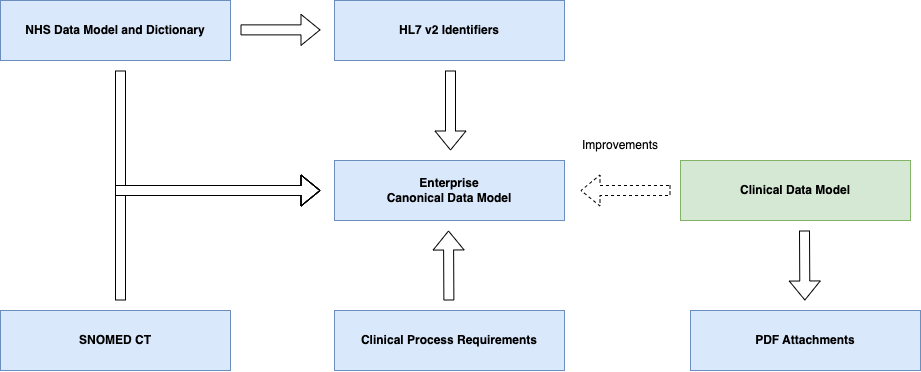NHS England North West GMSA - IHE Laboratory Testing Workflow (LTW)
0.0.1 - ci-build
NHS England North West GMSA - IHE Laboratory Testing Workflow (LTW)
0.0.1 - ci-build
DRAFT Implementation Guide
This is for collaboration and discussion purposes and is subject to change.
NHS England North West GMSA - IHE Laboratory Testing Workflow (LTW) - Local Development build (v0.0.1) built by the FHIR (HL7® FHIR® Standard) Build Tools. See the Directory of published versions
The model used for communication is a Canonical Data Model which is common across all technical formats (i.e. HL7 v2 and HL7 FHIR)
At present, this implementation guide uses PDF documents to convey the Clinical Data Model, for purposes of this Implementation Guide, which is described in NHS England FHIR Genomics Implementation Guide. The use of PDF is expected to change with the Clinical Data Model eventually being represented via a structure similar to HL7 Europe Laboratory Report, this should not alter the model presented here.
Elements from NHS England FHIR Genomics Implementation Guide have been incorporated into this guide, in particular the use of NHS Data Model and Dictionary Model identifiers and other identifiers already present in HL7 v2 OML and ORU. See Identities and Codes for more details.

Enterprise Canonical Data Model
Genomics Test Request Model
A detailed description of this archetype which includes mappings to HL7 FHIR can be found NW-Genomics-Test-Order. This is also a minimal dataset based on NHS Genomics MDM
This also includes messaging concepts which are described in this guide to add compatibility with HL7 v2 and IHE LTW.
Genomics Test Report Model
Both models have a very strong focus on the use of Correlation Identifier (Enterprise Integration Patterns) or Rule 3: Reference Other Aggregates by Identity (Implementing Domain Driven Design), which is also consistent with IHE/HL7 concepts of Bounded Context (martinfowler.com)
In practice this means, the following FHIR resources will have the following identifiers within the IHE Laboratory Testing Workflow domain:
This includes making use of FHIR Identifier assigner.identifier.value (HL7 v2 Assigning Facility in a variety of ID types) to distinguish these identifiers between different organisations, the recommendation is to use ODS Code, e.g.
{
"type" : {
"coding" : [
{
"system" : "http://terminology.hl7.org/CodeSystem/v2-0203",
"code" : "ACSN"
}
]
},
"value" : "1001166717",
"assigner" : {
"identifier" : {
"system" : "https://fhir.nhs.uk/Id/ods-organization-code",
"value" : "699X0"
}
}
}
Is present around Organisation, Practioner and PractitionerRole. NHS England has expressed a preference to use NHS England Identifiers, these are:
This is for discussion, this applies to FHIR resources identified as not being entities (and the use of identifier is not mandatory). These include:
In FHIR the codes for these will be CodeableConcept (HL7 v2 CE Data Types). It is excepted NHS England will
The use of FHIR resources for data which is currently HL7 v2 CE Data Type may need to be questioned.
For example mapping of HL7 v2 ORC-16 is to ServiceRequest.requestCode according to ServiceRquest - HL7 v2 Mapping, this is a v2 CE to FHIR CodeableConcept conversion.
Curently this is stated as an implied ServiceRequest.requestReference mapping (ISSUE link: NHS England Developer Community Genomics Order Management Service - FHIR ServiceRequest reason)